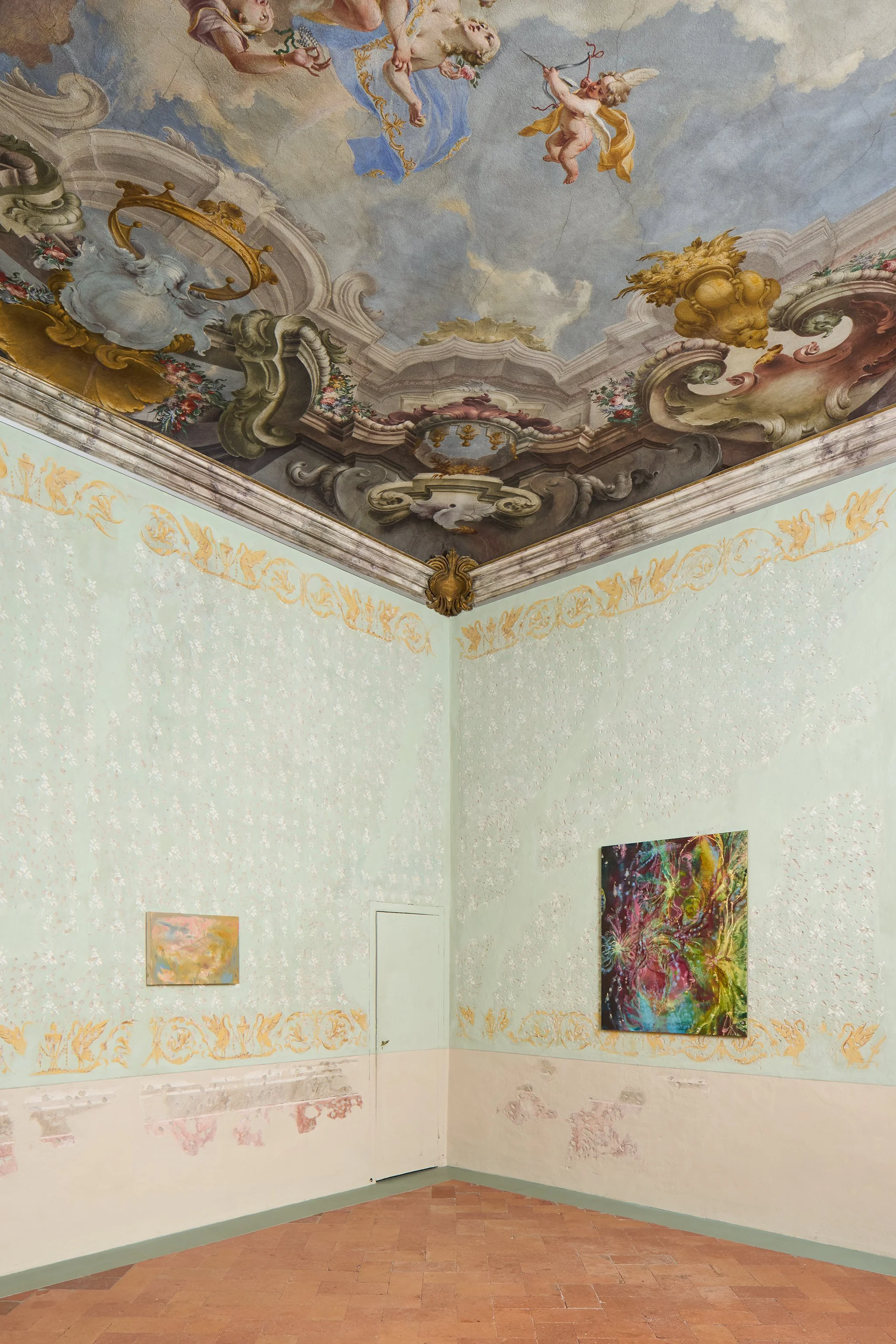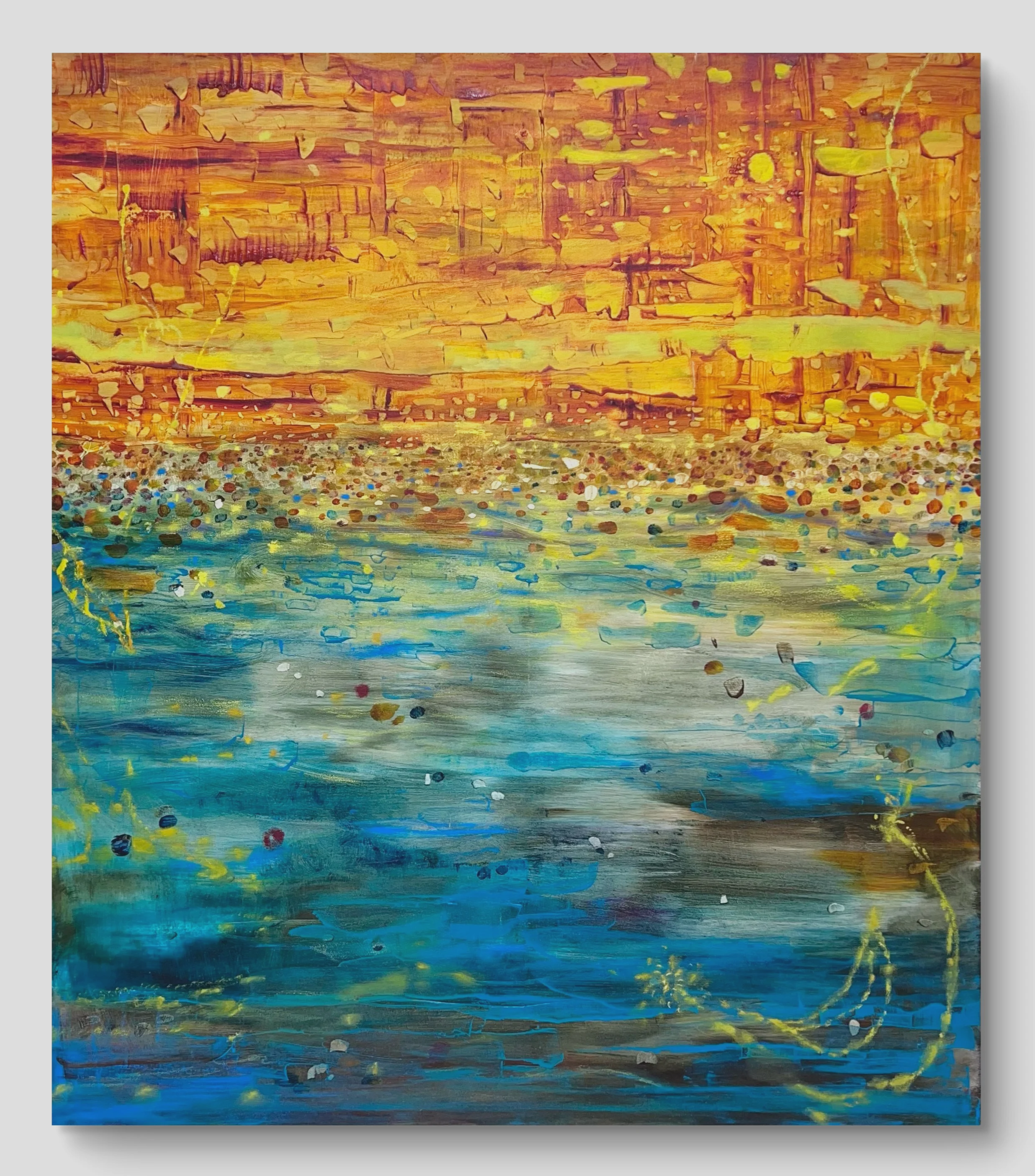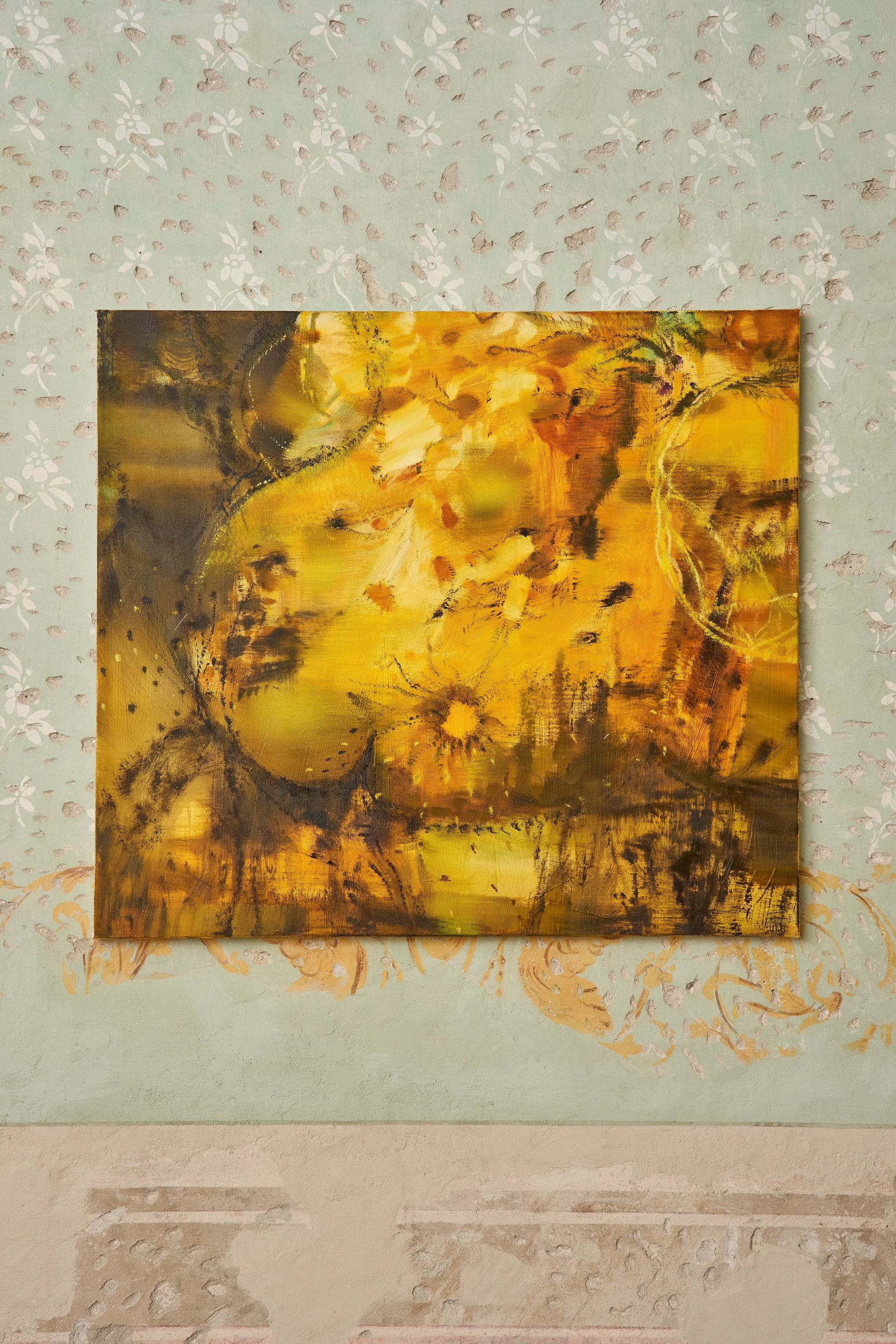Seohyun Oh

“I’m drawn to the intersection of the spiritual and the natural because I’m interested in capturing moments that feel both fleeting and timeless.”
Seohyun Oh is a South Korean painter based in London whose intuitive, abstract works explore perception, memory, and the shifting space between the real and the imagined. In this interview, she reflects on how rhythm, movement, and fleeting sensory impressions shape her atmospheric landscapes, revealing a practice grounded in intuition, fluidity, and the delicate interplay between nature and inner experience.
Could you tell us a bit about yourself and your background?
I’m a painter originally from Seoul, South Korea, but I’ve spent the past several years moving between Chicago, London, and South Korea. I’m currently based in London, where I completed my MA in Painting at the Royal College of Art in 2024. Before that, I earned my BFA in Painting from the School of the Art Institute of Chicago. My practice explores perception, memory, and fleeting moments that are difficult to articulate. I’m drawn to the subtle rhythms and movements in everyday life, translating those impressions into abstract, intuitive paintings. I like working in that space between reality and imagination, where something feels familiar yet slightly transformed.
Your paintings seem to move between the real and the imagined, blending organic forms with a sense of light and rhythm. How do you approach building these fluid, atmospheric landscapes?
I approach my paintings not as depictions of specific places, but as a way of exploring perception and feeling. I usually start with impressions , fragments of memory or fleeting moments , and let those guide the gestures and forms in the work. I spend a lot of time layering, reworking, and sometimes obscuring surfaces; that process helps me stretch and dissolve forms, creating a sense of movement and fluidity. Light, texture, and rhythm are really important to me. I think of them almost like musical elements, shaping how the painting unfolds and how the forms interact. My process is very intuitive , I respond to the energy in the studio, the flow of the brush, and often the music I’m listening to. In the end, I’m less interested in depicting a real landscape and more in capturing the sensation of perceiving something as it shifts , that moment when the real and the imagined begin to blur.
"Minestrone", Palazzo Monti ,September 2025
Music and movement seem to play a role in how your compositions unfold. Do you see painting as a performative or time-based process?
Yes, I see painting as both a performative and time-based process. Music and movement play a big role in how my compositions unfold. Listening to music while I work often influences the gestures I make and the rhythm of the marks, creating a kind of improvisational flow. Each movement feels performative, like a note in a larger composition, and the act of painting becomes a dialogue between my body, the materials, and the emerging image. At the same time, painting is very much time-based. I move around the studio, layer, rework, and revisit surfaces repeatedly, letting the work evolve gradually. The way a painting unfolds over hours or days mirrors how perception and memory shift, making time itself an essential part of the process. In that sense, the work exists both as a performance in the moment and as the accumulation of moments stretched across time.
Many of your works suggest a connection between the spiritual and the natural. What draws you to these themes, and how do they shape your use of colour and form?
I’m drawn to the intersection of the spiritual and the natural because I’m interested in capturing moments that feel both fleeting and timeless. Nature, for me, is never static, even the most solid forms seem to vibrate, shift, and transform. There’s an energy in landscapes, light, and weather that feels almost intangible, like it exists somewhere between the visible and the felt. Exploring this in my work allows me to consider how perception, memory, and emotion interact with the world around us. This approach really shapes the way I use colour and form. Rather than representing things literally, I focus on their essence , the mood, rhythm, and resonance of a moment. Colours often emerge intuitively, responding to the emotional quality of the scene or the energy I feel while working. Forms stretch, dissolve, and recombine, creating abstract fields that hover between reality and imagination. In this way, my paintings become a space where the natural world and an inner, spiritual experience coexist, inviting viewers to engage with both simultaneously.
Feels, 2025
Aurora, 2025, Photo by Petro Gilberto
Hair of the Dog, 2025, Photo by Petro Gilberto
Tell us a bit about how you spend your day / studio routine? What is your studio like?
My studio is currently based in Camberwell, London. It’s a large shared space divided between four artists. I really enjoy that quiet sense of community, it helps me focus while also feeling connected to others. I usually go to the studio after breakfast and start the day with drawings. It’s hard for me to go straight into painting; drawing helps me loosen up and find a rhythm. Listening to good music is also really important it sets the mood for my day and creates the kind of positive energy I need. Probably this is true for many artists, but especially for me, because my work is very intuitive. Being around good vibes really affects how my paintings develop. During the day, I move fluidly between paintings, layering, reworking, and responding to what’s happening on the canvas. Sometimes I step out to a nearby coffee shop when I need a break or some fresh air, especially after long stretches of focus. My routine really depends on how I feel: when things flow, I can paint all day; if not, I might work for a few hours and then go back to my flat , meet friends, or visit an exhibition. It’s a balance between discipline and allowing space for intuition to guide me.
What artwork have you seen recently that has resonated with you?
I recently went to Paris to see Disco by Vivian Suter at the Palais de Tokyo. The show featured 493 paintings created over the last 20 years, and it was incredible to see the life of a person unfold across a single exhibition. What really struck me was how free and honest her paintings are — there’s such energy and directness, a sense that she’s fully following her own impulses. Seeing that kind of openness sustained over such a large body of work was truly inspiring.
Is there anything new and exciting in the pipeline you would like to tell us about?
Yes, absolutely , there are a few things I’m really excited to share. I’ll be presenting a new body of work at NADA Miami with Andrew Reed, which feels like an important moment for me. These pieces were developed over the past several months and reflect a shift in both tone and approach within my practice. Preparing for this presentation has allowed me to further explore the themes and visual language I’ve been working through, and I’m looking forward to seeing how the works resonate in that context. A significant part of this development happened over the summer, when I spent time in a residency in Brescia, Italy. The residency gave me the space and focus to slow down, experiment, and engage more deeply with my materials. Being in Italy , surrounded by a different rhythm of life, architecture, and history , naturally influenced the way I approached the work. It gave me room to rethink certain aspects of my process and push myself into directions I had been considering but hadn’t yet fully committed to. Both experiences , the residency and the upcoming presentation feel connected, and I’m really excited to finally share the results of that period of growth and exploration.
All images courtesy of the artist
Interview publish date: 20/11/2025
Interview by Richard Starbuck



